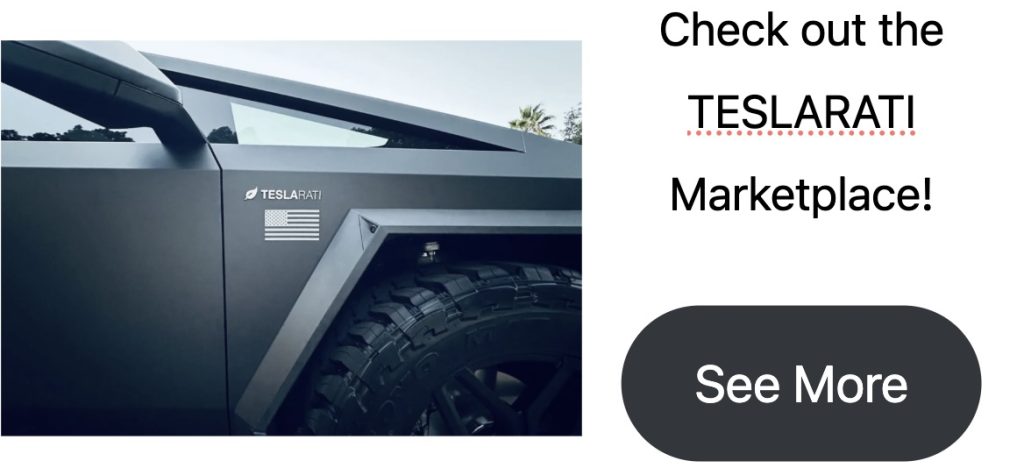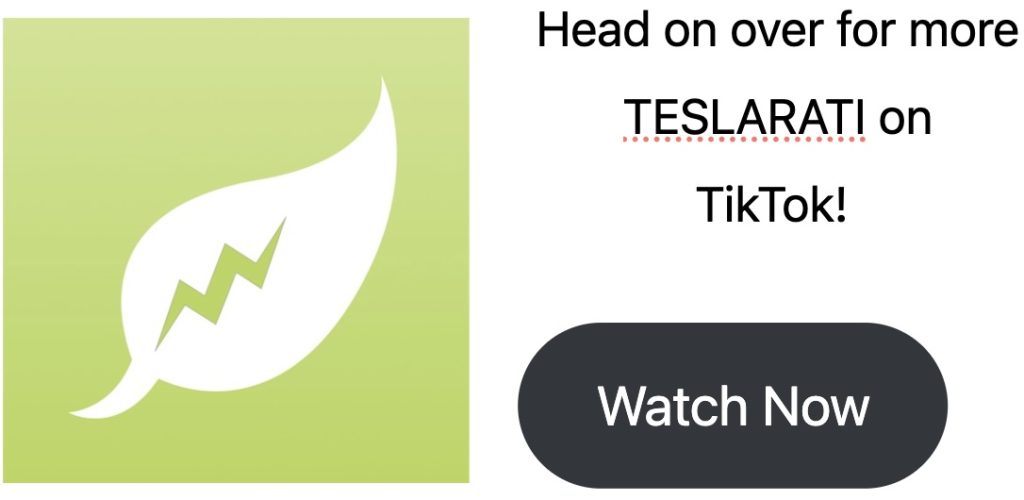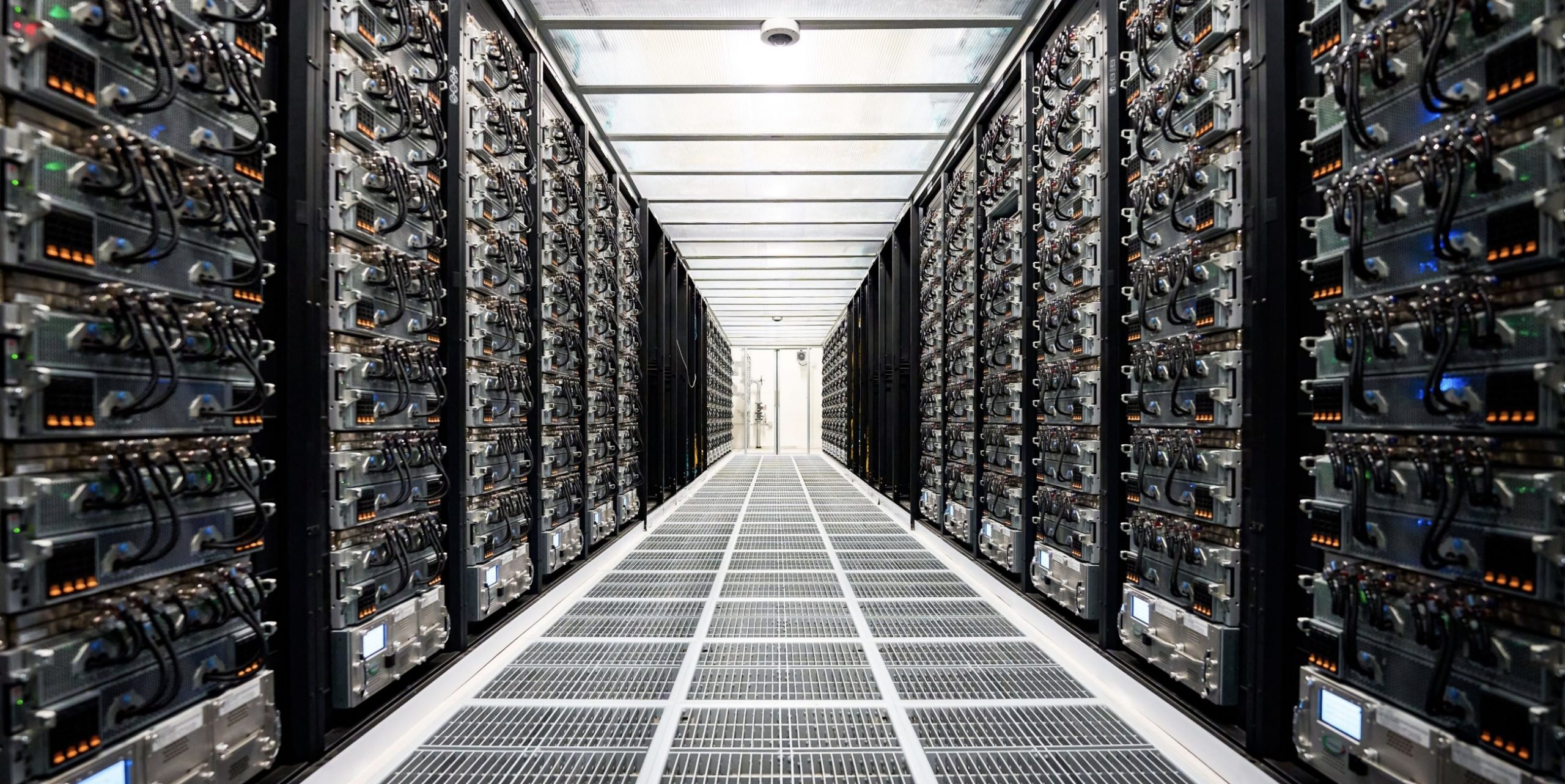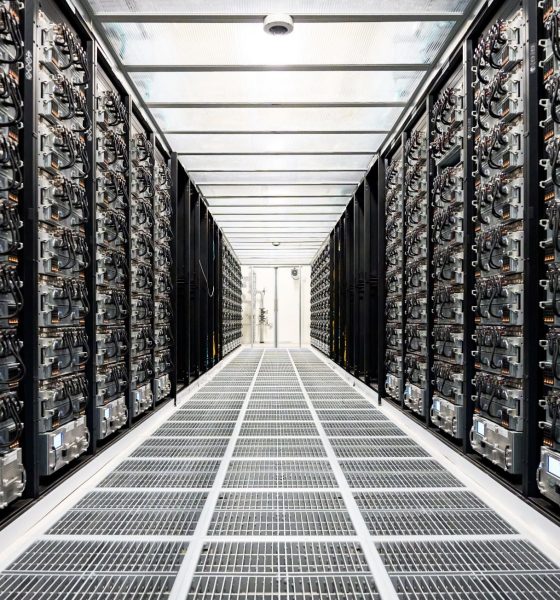Tesla’s (NASDAQ:TSLA) Q4 and FY 2024 earnings call comes on the heels of the company’s Q4 and FY 2024 Update Letter, which was released after the closing bell on January 29, 2025.
Tesla’s Q4 2024 results:
- Earnings Per Share (GAAP): $0.66 per share
- Earnings Per Share (Non-GAAP): $0.73 per share
- Operating Income: $7.1 billion GAAP; $7.1 billion GAAP net income in 2024; $2.3 billion in Q4 including $0.6 billion mark-to-market gain on digital assets.
- Total Revenues: $25.7 billion
- Total Automotive Revenues: $19.80 billion
Q4 & FY 2024 Earnings Call at 4:30pm CT today https://t.co/uFCg69a6tN— Tesla (@Tesla) January 29, 2025
The following are live updates from Tesla’s Q4 and FY 2024 earnings call. I will be updating this article in real-time, so please keep refreshing the page to view the latest updates on this story. The first entry starts at the bottom of the page.
17:41 CT – And that closes Tesla’s Q4 and FY 2024 earnings call! Thanks so much for joining us, and see you next quarter!
17:40 CT – Dan Levy of Barclays asks about Trump’s anti-EV mandate and Elon Musk’s view on it. The CEO noted that at this point, sustainable transport is inevitable. “At this point I think sustainable transport is inevitable. You can’t stop the advent of electric cars. It’s gonna happen. The only thing holding back electric cars is range, and that is a solved problem,” Musk said.
17:37 CT – Pierre Ferragu of New Street Research asked about Tesla’s plans to deploy robotaxis on June. He wonders if he can drive down to Texas in June to test it. Musk said sure, and at the time, Tesla would be using its own fleet for its initial autonomous ride-hailing program. Cars won’t be from individual owners.
Musk also predicts that Tesla owners will be able to add car their cars to the robotaxi fleet by next year.
Tesla is also working toward FSD Unsupervised which will allow people to check their emails, texts, etc., while the vehicle is in motion, but the company is very cautious. Tesla has seen that people are turning off FSD Unsupervised to check their texts.
17:30 CT – Adam Jonas of Morgan Stanley asked if Elon Musk still does not believe in Lidar. Elon Musk says he still does not. “Obviously, humans drive without shooting lasers out of their eyes,” Musk joked. He also explained that he is not anti-Lidar per se. He’s just anti-Lidar when it comes to autonomous cars.
17:25 CT – As for FSD in China, Musk noted that training videos in China cannot be exported out. Tesla figuring out how to train FSD Unsupervised in China. One of the challenges is bus lanes, which are very complex in China.
“Hopefully, we can have Unsupervised FSD in other countries next year,” Musk said.
17:18 CT – Analyst questions start with Bernstein. He asks Elon Musk about what he is doing to push Tesla’s management team to accelerate the company’s programs. Musk noted that Tesla is working on perfecting real-world AI. “I spend a lot of time with the Tesla AI team and the Tesla Optimus team,” he said.
Musk noted that there are many challenges with Optimus and vehicle autonomy, but the pieces are there. He predicts Europe will be a challenge for FSD Unsupervised. FSD Unsupervised is expected to be presented to the EU in the Netherlands in May, with a release probably next year.
17:15 CT – A question about HW3 vehicles was asked. Tesla noted that the company is not giving up on HW3. Tesla is still working on HW3 but updates will trail HW4 releases.
“We are going to have to upgrade Hardware 3 for people who bought FSD. That’s the honest answer. It’s going to be painful and difficult but that’s what we’re going to have to do,” Musk admitted.
Another question was asked if Tesla has given up on Solar Roof. Tesla noted that it has not. Musk noted that Tesla has found growth by distributing Solar Roof to the roofing industry.
17:14 CT – Another question is asked, this time about the Tesla Semi and how it will affect revenue and scale. Tesla noted that preparations for production are ongoing, and that production is expected to start late this year from Reno. He also thinks the Semi will be incredibly valuable with FSD Unsupervised.
Musk noted that the United States actually has a shortage of truck drivers. And truck drivers are human, so they get tired. “I have a lot of respect for truck drivers, because it’s a tough job,” Musk said.
He noted that more people are leaving trucking than those entering it. With this in mind, autonomy is extremely important. “It’s a several billion-a-year opportunity,” Musk said. That said, the CEO also noted that “all of this is gonna pale in comparison to Optimus.”
17:10 CT – Musk reiterated that Optimus will be used at Tesla factories first, doing tedious tasks that no one wants to do.
Optimus production Version 2–maybe starting mid-next year–will be designed for 10,000 units a month vs 1,000 units a month. Version 3 is for 100,000 units per month, and with Version 2, Optimus robots may be delivered to other companies.
“Demand will not be a problem, even at a high price,” Musk said. He also noted that at one million units per year, Optimus’ production costs will be around or less than $20,000.
17:04 CT – Another investor question asked if Optimus is designed locked. Musk noted that Optimus is not design-locked at all. However, the CEO noted that “it is rapidly evolving in a good direction.” Musk also noted that other companies are missing real-world AI and manufacturing capabilities.
17:03 CT – The next investor question asked if other carmakers are interested in licensing FSD. Elon Musk confirmed that yes, they are. “What we’re seeing is at this point is significant interest in licensing FSD,” the CEO noted. But before FSD is licensed, Tesla has to reach unsupervised FSD first.
17:01 CT – Investor questions begin. The first is about unsupervised FSD’s release. Musk noted that he believes unsupervised FSD in California and Texas this year, with many more regions at the end of 2025.
“We’re looking for a safety level that is significantly safer than a human driver,” Musk said. “The only thing holding us back is an excess in caution,” Musk said.
17:00 CT – The CFO noted that Tesla’s growth came from Megapack and Powerwall. Both continue to be production-constrained, which will hopefully be relieved by China, whose Shanghai Megafactory is producing Megapacks. Tariffs, however, are very likely, Tesla’s CFO noted.
16:58 CT – Tesla’s CFO takes the stage. He credits the Tesla team for its performance in Q4. He also discussed some milestones, such as record deliveries in the Greater China market, which is extremely competitive.
Cost reduction continues as well, despite increased depreciation and other costs as the company prepared for the new Model Y. Overall cost per car now down below $35,000.
The new Model Y will be produced in all factories supporting the vehicle starting next month. This is unprecedented in Tesla history.
He notes that Tesla is also on track to release a more affordable model in the first half of 2025, and there will be more models from there.
16:54 CT – Elon Musk predicts increased demand in energy business. That said, he does admit that Tesla always has to allocate its battery supply. “2025 is really a pivotal year for Tesla. It might be viewed as the most important year in Tesla history,” Musk said.
16:50 CT – Elon, however, admitted that he’s making insane predictions. He cautions that his predictions aren’t necessarily precise. That said, the target is to make 10,000 Optimus robots this year. Elon is confident that Tesla can produce a few thousand this year, with a goal to ramp Optimus production every year.
Optimus’ capabilities are expected to be very impressive. Musk notes that Optimus would be able to play the piano or thread a needle. That’s how precise its hands would be. “Optimus will be able to play the piano and be able to thread a needle,” Musk said.
16:48 CT – Tesla expects to launch Unsupervised FSD as a service in Austin in June. Musk noted that Tesla’s unsupervised FSD system is already working very well in the company’s factories.
“The cars aren’t just driving to the same spot. The cars are programmed to a lane” or a destination parking spot for pick up from customers. Teslas will be in the wild–with no one in them–in Austin in June,” Musk said.
16:45 CT – Musk noted that Tesla’s current constraints are battery packs for now. “Things are going to ballistic next year…and ’27, and ’28,” he said.
Musk also stated that the training needs for the Optimus robot is 10x what’s needed for a car. A humanoid robot, however, probably has 1000 more uses than a car.
“We live at this unbelievable inflection point in history,” Musk said.
16:40 CT – “I know I’ve been called the boy who cried wolf. I’m telling you, there’s a damn wolf this time. It can drive you,” Musk joked, discussing FSD and his past failed predictions about when unsupervised FSD will be ready.
He also highlighted that while FSD behaved like a neophyte driver before, it won’t be like that forever.
“The only people who are skeptical are those who haven’t tried it (FSD),” he said. He also highlighted the potential of the Tesla Network. “It works fine in the US, and of course, it will work just well anywhere else. The reality of autonomy is upon us,” Musk added.
16:38 CT – Elon takes the stage. He states that Tesla ended the year with a run rate of 2 million cars per year. The Model Y was the world’s best-selling car again in 2024. He shares an optimistic outlook on Tesla’s autonomy program.
“Autonomy is 10X-ing,” Musk said, adding that he still sees a path toward Tesla becoming the world’s most valuable company by a mile. “There’s a path to that,” he said.
Musk noted that Tesla laid the groundwork for autonomous cars and robots in 2024, and these efforts will continue in 2025. “This will set up what I think will be an epic 2026 and a ridiculously good 2027 and 2028,” Musk said.
16:34 CT – Here we go! Tesla’s IR announces that Tesla CEO Elon Musk and a number of executives are present at the call.
16:30 CT – It’s time! It won’t be surprising if Tesla starts a bit late. That being said, there will probably be quite a number of interesting discussions in this call.
Just recently, Tesla posted the first video of its FSD Unsupervised system working in the Fremont Factory. That’s a very big deal.
16:25 CT – Hello, and happy earnings day to everyone! Tesla missed some of Wall Street’s expectations, but TSLA stock seems to be doing pretty well in today’s after-hours. It’s up about 2.3% as of writing.
As always, this might be a very interesting earnings call.


Don’t hesitate to contact us with news tips. Just send a message to simon@teslarati.com to give us a heads up.

Investor's Corner
Tesla stock closes at all-time high on heels of Robotaxi progress

Tesla stock (NASDAQ: TSLA) closed at an all-time high on Tuesday, jumping over 3 percent during the day and finishing at $489.88.
The price beats the previous record close, which was $479.86.
Shares have had a crazy year, dipping more than 40 percent from the start of the year. The stock then started to recover once again around late April, when its price started to climb back up from the low $200 level.
This week, Tesla started to climb toward its highest levels ever, as it was revealed on Sunday that the company was testing driverless Robotaxis in Austin. The spike in value pushed the company’s valuation to $1.63 trillion.
Tesla Robotaxi goes driverless as Musk confirms Safety Monitor removal testing
It is the seventh-most valuable company on the market currently, trailing Nvidia, Apple, Alphabet (Google), Microsoft, Amazon, and Meta.
Shares closed up $14.57 today, up over 3 percent.
The stock has gone through a lot this year, as previously mentioned. Shares tumbled in Q1 due to CEO Elon Musk’s involvement with the Department of Government Efficiency (DOGE), which pulled his attention away from his companies and left a major overhang on their valuations.
However, things started to rebound halfway through the year, and as the government started to phase out the $7,500 tax credit, demand spiked as consumers tried to take advantage of it.
Q3 deliveries were the highest in company history, and Tesla responded to the loss of the tax credit with the launch of the Model 3 and Model Y Standard.
Additionally, analysts have announced high expectations this week for the company on Wall Street as Robotaxi continues to be the focus. With autonomy within Tesla’s sights, things are moving in the direction of Robotaxi being a major catalyst for growth on the Street in the coming year.
Elon Musk
Tesla needs to come through on this one Robotaxi metric, analyst says
“We think the key focus from here will be how fast Tesla can scale driverless operations (including if Tesla’s approach to software/hardware allows it to scale significantly faster than competitors, as the company has argued), and on profitability.”

Tesla needs to come through on this one Robotaxi metric, Mark Delaney of Goldman Sachs says.
Tesla is in the process of rolling out its Robotaxi platform to areas outside of Austin and the California Bay Area. It has plans to launch in five additional cities, including Houston, Dallas, Miami, Las Vegas, and Phoenix.
However, the company’s expansion is not what the focus needs to be, according to Delaney. It’s the speed of deployment.
The analyst said:
“We think the key focus from here will be how fast Tesla can scale driverless operations (including if Tesla’s approach to software/hardware allows it to scale significantly faster than competitors, as the company has argued), and on profitability.”
Profitability will come as the Robotaxi fleet expands. Making that money will be dependent on when Tesla can initiate rides in more areas, giving more customers access to the program.
There are some additional things that the company needs to make happen ahead of the major Robotaxi expansion, one of those things is launching driverless rides in Austin, the first city in which it launched the program.
This week, Tesla started testing driverless Robotaxi rides in Austin, as two different Model Y units were spotted with no occupants, a huge step in the company’s plans for the ride-sharing platform.
Tesla Robotaxi goes driverless as Musk confirms Safety Monitor removal testing
CEO Elon Musk has been hoping to remove Safety Monitors from Robotaxis in Austin for several months, first mentioning the plan to have them out by the end of 2025 in September. He confirmed on Sunday that Tesla had officially removed vehicle occupants and started testing truly unsupervised rides.
Although Safety Monitors in Austin have been sitting in the passenger’s seat, they have still had the ability to override things in case of an emergency. After all, the ultimate goal was safety and avoiding any accidents or injuries.
Goldman Sachs reiterated its ‘Neutral’ rating and its $400 price target. Delaney said, “Tesla is making progress with its autonomous technology,” and recent developments make it evident that this is true.
Investor's Corner
Tesla gets bold Robotaxi prediction from Wall Street firm
Last week, Andrew Percoco took over Tesla analysis for Morgan Stanley from Adam Jonas, who covered the stock for years. Percoco seems to be less optimistic and bullish on Tesla shares, while still being fair and balanced in his analysis.

Tesla (NASDAQ: TSLA) received a bold Robotaxi prediction from Morgan Stanley, which anticipates a dramatic increase in the size of the company’s autonomous ride-hailing suite in the coming years.
Last week, Andrew Percoco took over Tesla analysis for Morgan Stanley from Adam Jonas, who covered the stock for years. Percoco seems to be less optimistic and bullish on Tesla shares, while still being fair and balanced in his analysis.
Percoco dug into the Robotaxi fleet and its expansion in the coming years in his latest note, released on Tuesday. The firm expects Tesla to increase the Robotaxi fleet size to 1,000 vehicles in 2026. However, that’s small-scale compared to what they expect from Tesla in a decade.
Tesla expands Robotaxi app access once again, this time on a global scale
By 2035, Morgan Stanley believes there will be one million Robotaxis on the road across multiple cities, a major jump and a considerable fleet size. We assume this means the fleet of vehicles Tesla will operate internally, and not including passenger-owned vehicles that could be added through software updates.
He also listed three specific catalysts that investors should pay attention to, as these will represent the company being on track to achieve its Robotaxi dreams:
- Opening Robotaxi to the public without a Safety Monitor. Timing is unclear, but it appears that Tesla is getting closer by the day.
- Improvement in safety metrics without the Safety Monitor. Tesla’s ability to improve its safety metrics as it scales miles driven without the Safety Monitor is imperative as it looks to scale in new states and cities in 2026.
- Cybercab start of production, targeted for April 2026. Tesla’s Cybercab is a purpose-built vehicle (no steering wheel or pedals, only two seats) that is expected to be produced through its state-of-the-art unboxed manufacturing process, offering further cost reductions and thus accelerating adoption over time.
Robotaxi stands to be one of Tesla’s most significant revenue contributors, especially as the company plans to continue expanding its ride-hailing service across the world in the coming years.
Its current deployment strategy is controlled and conservative to avoid any drastic and potentially program-ruining incidents.
So far, the program, which is active in Austin and the California Bay Area, has been widely successful.










